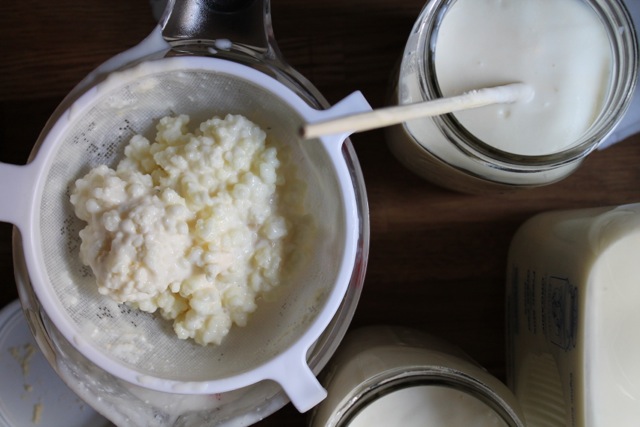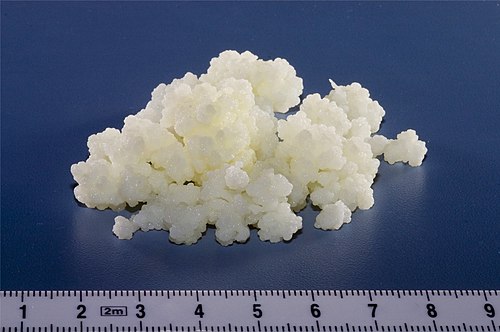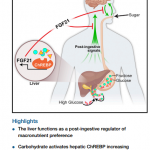Milk kefir. Lactobacillus Gasseri.
Contents
Breakthrough pill can CURE diabetes: New drug fights both types of killer disease
It could be that they just take the pill and wouldn’t have to do anything else to control their diabetes
“One of the things that’s useful about probiotics is that they’re generally regarded as safe by the Food and Drug Administration,” he said.
“They’re already available, people already take them, and they haven’t had any adverse side effects. It’s a good vehicle for delivering things to cells on the gastrointestinal tract.”
Professor March told how after being administered with the probiotic pills, the diabetic rats began showing signs more like the non-diabetic rats.
“The amount of time to reduce glucose levels following a meal is the same as in a normal rat, and it is matched to the amount of glucose in the blood, just as it would be with a normal-functioning pancreas,” he said.
“It’s moving the centre of glucose control from the pancreas to the upper intestine.”
He added: “If the rat is managing its glucose, it doesn’t need more insulin.”
The exciting new discovery has now left the team preparing to move onto the next stage – testing higher doses of the engineered probiotic in diabetic rats in order to see whether it can completely reverse the condition.
If successful, the probiotic could then be made into a pill for human use.
And the researchers hope diabetes sufferers would then simply be able to take the pill each morning to help manage their condition – or in some cases even reverse it.
http://www.express.co.uk/life-style/health/555792/Simple-pill-could-spell-the-end-for-diabetes-agony
Lactobacillus Gasseri – A Miracle Probiotic
Lactobacillus gasseri is probably one of the most beneficial probiotics discovered. It is also one of the safest probiotics, as the vast majority of the probiotics from the Lactobacillus(link is external)genus(link is external). Lactobacillus gasseri is very effective, and it can be used as a single strain in probiotic supplements, and it is also found in many probiotic blends.
L. gasseri(link is external) is a normal inhabitant of the human intestinal tract, and it is also part of the vaginal microflora. This amazing bacterium is also found in our mouth. Recent research on this amazing bacterium brought to the attention of the probiotic industry, and many manufacturers already included it in their probiotic formulations.
In theory, L. gasseri should be able to colonize the gut. The mannose-specific proteinaceous adhesion helps its ability to attach to the intestinal linings. This means that, at least in theory, it could form a healthy colony in your intestine, and you could stop taking it, whether you get it from a probiotic supplement, or from a food. In real life, I found that once I stopped taking the supplement the effects have diminished at first, and then disappeared. Read this post on how I accidentally lost 10 pounds in 8 months without any effort, and no diet.
Probiotics Benefits
Probiotics use in medicine is an incredible revolution in the medicine world. From the antimicrobial approach that was used not too long ago, to the concept that microbes are our friends, and we can use them to cure illnesses the medical world has gone a long way. The microbe revolution in medicine is one of the most important ones. We realized in the latest years that so many illnesses and mysterious conditions are linked to an imbalanced microbiome. More studies show how important is the symbiosis between humans and microbes. Even some pathogens have their importance in the big picture, and help us stay healthy. Looking back at the history(link is external), we know now how important is to take a holistic approach in medicine. Allopathic medicine evolves and embraces now many alternative methods.
Probiotics can benefit you in many ways, and an imbalanced microflora will always lead to health problems. Probiotics from the Lactobacillus genus are the most used in the industry because of their vast range applicability. Here are just a few examples:
- Immunity
- Weight control, (weight loss and weight gain)
- Women’s health
- Dental health
- Allergies
- Inflammatory diseases
- Gastrointestinal problems including IBS and IBD
- Constipation and diarrhea
- Protects against the common cold and the flu virus
LactoBacillus Gasseri Health Benefits
The health benefits of L. gasseri are similar to other species in the Lactobacillus genus. The most interesting, however, is the ability to help us lose weight. Lactobacillus bacteria populations can affect your body weight and metabolism. Some strains can make you gain weight, some others can make you lose weight. This comparative analysis(link is external) done by a group of French researchers reveals that increased populations of Lactobacillus acidophilus, Lactobacillus fermentum and Lactobacillus ingluviei strains will result in weight gain, whereas Lactobacillus plantarum and Lactobacillus gasseri populations could help with weight loss.
Weight Loss
L. Gasseri is one of the fewest strains that can help with weight loss. There are a few strains of gasseri that were scientifically studied for weight loss. This study(link is external) on rats proves the efficacy of the LG2055 as an anti-obesity probiotic. A Korean study on humans(link is external), showed that Lactobacillus gasseri BNR17 can be used to reduce weight in overweight and obese adults. Another study(link is external) conducted by a group of Japanese scientists showed that fermented milk containing the SBT2055 strain of L. gasseri is effective to burn abdominal fat, and reduce overall weight.
Helicobacter Pylori Infection – Acid Reflux
H. pylori infection is one of the major causes for many gastroduodenal diseases, including gastric ulcer, duodenal ulcer, and acid reflux. Antibiotic treatment has many side effects, as the antibiotic destroys the entire intestinal microflora in the process. The Journal of Clinical Microbiology published this article(link is external) where a team of Japanese scientists show the effectiveness of the Lactobacillus gasseri strain OLL2716 to reduce populations of H. pylori.
Immunity Boost
Like most of the probiotic microorganisms, Lactobacillus gasseri can stimulate immune response, boosting our body’s capacity to defend against pathogens. This study(link is external) researched two strains of the species. The study demonstrated that the two strains, L. gasseri OLL2809 and L. gasseri L13-Ia are highly effective in modulating in vitro dendritic cells and enterocytes. In another study(link is external) it was showed that the strain TMC0356 can modify the immune response even if the microorganisms are dead.
Women’s Health
There are many probiotics that help women stay healthy. The OLL2809 strain of L. gasseri works great for alleviating menstrual pain(link is external) and dysmenorrhea(link is external) in patients suffering from endometriosis(link is external).
Anti-inflammatory
L. gasseri was administered to mice, in a study to determine its effectiveness in reducing inflammation of the intestine of IBD affected subjects. The study found evidence to show the probiotic as a promising treatment for IBD(link is external). Although it is speculated that some gasseri strains should also reduce inflammation of the joints, there is no research to support this.
Seasonal Allergies
Another benefit related to the inflammation is the reduction of allergic rhinitis symptoms. In a study(link is external) on guinea pigs, L. gasseri TMC0356 showed the ability to alleviate nasal blockage.
Lower Cholesterol Levels
Various strains of Lactobacillus gasseri were studied for their ability to lower cholesterol(link is external). Although the cultures were effective in various degrees, they still did lower cholesterol. In another study(link is external), L. gasseri SBT0270 was shown to have a hypocholesterolemic effect.
Lactobacillus Gasseri Supplement
Lactobacillus Gasseri was named in the scientific circles “the fitness probiotic”. Its capability to help our body regulate levels of leptin, makes it unique and a valued ally in our fight to stay fit. Leptin (link is external)is a hormone that has a critical function in fat storage and energy metabolism. Leptin is “the satiety hormone” as it helps us control the sensations of hunger and fullness, and acts as a brake on appetite while boosting metabolism. A problem with many people who diet to lose weight is that the levels of leptin decline during the diet, slowing down metabolism in order to conserve energy. It our body’s…
Side Effects of Lactobacillus Gasseri
Most probiotics on the market are sold as foodstuffs, and very rare as drugs. Probiotics from Lactobacillus genus are generally safe, but some strains can cause opportunistic infections. Since Lactobacillus gasseri is a normal inhabitant of our gut, it is safer than foreign microorganisms.
There some mild effects associated with Lactobacillus gasseri, but they are transitory, and the side effects stop once you stop taking the probiotic. As many other probiotics, it will trigger bloating and gas. Depending on your diet, you can get serious abdominal pain due to the gas pressure. People with weak immune system should talk to a doctor before taking it, (and any probiotics for that matter). People with short bowel syndrome should also not take it without consulting a doctor. If you are taking an immunosuppressant you should not take any probiotics without talking to your doctor.
If the side effects are intolerable stop taking the supplement, and start with a lower dose in a few days. As your microbiome changes, you will tolerate the probiotic better in time.
Check this article for more general considerations on safety of probiotics(link is external).
 Natural Sources of Lactobacillus Gasseri
Natural Sources of Lactobacillus Gasseri
Lactobacillus gasseri is found in many fermented foods but in minimal quantities. It can be found in puba, or carimã, a Brazilian food made with fermented cassava. It can be also found in fermented meats. Another natural source is Kefir, fermented milk similar to yogurt. Breast milk also contains L. gasseri in important quantities.
The ideal diet should include various fermented foods, and this way we can supplement with various strains. In real life, however, this is not easy, because fermented foods are not commercially available. The Lactobacillus gasseri supplement is one of the fewest I recommend buying. I eat kefir regularly, I prefer it to yogurt, though sometimes I switch between them, however, kefir is not a big source of L. gasseri. The point is, you can’t really get it from natural sources, and the benefits of taking it regularly are remarkable. Swanson has a supplement with the unique probiotic – Lactobacillus Gasseri. If you want a blend instead, you can check our comprehensive list of probiotics, you can find a few probiotics with lactobacillus gasseri.
Other References:
- Kadooka Y, Sato M, Imaizumi K, et al. Regulation of abdominal adiposity by probiotics (Lactobacillus gasseri SBT2055) in adults with obese tendencies in a randomized controlled trial.(link is external)
- Ooi LG, Ahmad R, Yuen KH, Liong MT. Lactobacillus gasseri [corrected] CHO-220 and inulin reduced plasma total cholesterol and low-density lipoprotein cholesterol via alteration of lipid transporters.(link is external)
- Chen YS, Jan RL, Lin YL, Chen HH, Wang JY. Randomized placebo-controlled trial of lactobacillus on asthmatic children with allergic rhinitis.(link is external)
- Itoh H, Uchida M, Sashihara T. Lactobacillus gasseri OLL2809 is effective especially on the menstrual pain and dysmenorrhea in endometriosis patients: randomized, double-blind, placebo-controlled study.(link is external)
- Ryuzo Deguchi, Hidemasa Nakaminami, Emiko Rimbara, et al. Effect of pretreatment with Lactobacillus gasseri OLL2716 on first-line Helicobacter pylori eradication therapy.
http://www.fermented-foods.com/probiotic-strains/lactobacillus-gasseri-miracle-probiotic
Effect of Lactobacillus gasseri BNR17 on blood glucose levels and body weight in a mouse model of type 2 diabetes.
KEFIR.
Traditional kefir is fermented at ambient temperatures, generally overnight. Fermentation of the lactose yields a sour, carbonated, slightly alcoholic beverage, with a consistency and taste similar to thin yogurt.[8]
The kefir grains initiating the fermentation are a combination of lactic acid bacteria and yeasts in a matrix of proteins, lipids, and sugars. This symbiotic culture of bacteria and yeast (or SCOBY) forms “grains” that resemble cauliflower. A complex and highly variable community of lactic acid bacteria and yeasts can be found in these grains, although some predominate; Lactobacillus species are always present.[3] Even successive batches of kefir may differ due to factors such as the kefir grains rising out of the milk while fermenting, or curds forming around the grains, as well as room temperature.[9]
Kefir grains contain kefiran, a water-soluble polysaccharide, which imparts a creamy texture and feeling in the mouth. The grains range in color from white (the acceptable color of healthy grains) to yellow; the latter is the outcome of leaving the grains in the same milk during fermentation for longer than the optimal 24-hour period, and continually doing so over many batches. Grains may grow to the size of walnuts, and in some cases larger.
The composition of kefir depends greatly on the type of milk that was fermented, including the concentration of vitamin B12.
During fermentation, changes in composition of nutrients and other ingredients occur. Lactose, the sugar present in milk, is broken down mostly to lactic acid (25%) by the lactic acid bacteria, which results in acidification of the product.[3] Propionibacteria further break down some of the lactic acid into propionic acid (these bacteria also carry out the same fermentation in Swiss cheese). A portion of lactose is converted to kefiran, which is indigestible by gastric digestion. Other substances that contribute to the flavor of kefir are pyruvic acid, acetic acid, diacetyl and acetoin (both of which contribute a “buttery” flavor), citric acid, acetaldehyde and amino acids resulting from protein breakdown.[10]

The slow-acting yeasts, late in the fermentation process, break lactose down into ethanol and carbon dioxide. Depending on the process, ethanol concentration can be as high as 1–2% (achieved by small-scale dairies early in the 20th century), with the kefir having a bubbly appearance and carbonated taste. This makes kefir different from yogurt and most other sour milk products where only bacteria ferment the lactose into acids. Most modern processes, which use shorter fermentation times, result in much lower ethanol concentrations of 0.2–0.3%.
As a result of the fermentation, very little lactose remains in kefir. People with lactose intolerance are able to tolerate kefir, provided the number of live bacteria present in this beverage consumed is high enough (i.e., fermentation has proceeded for adequate time). It has also been shown that fermented milk products have a slower transit time than milk, which may further improve lactose digestion.[11]
For the preparation of the present factory-produced kefir, the so-called kefir mild, kefir grains are no longer used, but a precise composed mixture of different bacteria and yeast, allowing the flavor to be kept constant.
Variations that thrive in various other liquids exist, and they vary markedly from kefir in both appearance and microbial composition. Water kefir (or tibicos) is grown for a day or more at room temperature in water with sugar, sometimes with lemon juice and added dry fruit such as figs.
https://www.wikiwand.com/en/Kefir
WHAT IS A SECOND FERMENTATION?
The first fermentation takes place when milk kefir grains are added to milk and cultured for around 24 hours. Once the grains are separated and transferred to fresh milk, the resulting liquid is milk kefir.
Since the grains have been removed, the milk kefir can be further cultured and flavored, according to taste preference. This culturing period is the second fermentation.
HOW LONG IS A SECOND FERMENTATION?
How long you continue to let your kefir ferment depends on your taste preferences. We recommend tasting your kefir frequently during its second ferment to get a feel for how the flavor changes over time. A second ferment can range from 6 to 12 hours, or more or less, just depending on the culturing conditions of your home and taste preferences.
WHAT ARE THE BENEFITS OF A SECOND FERMENTATION?
A second fermentation can be performed for the additional bacterial content, reduced lactose content, or simply for the improvement in flavor.
Fermenting the kefir a second time, no matter the additions, mellows the kefir and takes away some of the sharp acidic flavor milk kefir is known for. Not only that, but with the addition of other flavorings, it can be a spicey, sweet, or savory fermented drink.
WHAT FLAVORS CAN I ADD IN THE SECOND FERMENTATION?
The sky is the limit! Because the kefir grains are removed before the second fermentation there is no risk of a contaminating or harming your kefir grains in any way.
Our Favorite Milk Kefir Flavoring Ideas:
- Citrus fruit peels
- Vanilla + cinnamon
- Cocoa powder
- Garlic or onion (for use in savory kefir dip)
- Pumpkin pie spice
- Chopped fruit
- Chai-Spiced Milk Kefir
- Frothy Orange Kefir Beverage
Milk Kefir Flavoring Tips:
- Use flavor additions that can be easily removed from the kefir when the second fermentation period is complete. Ground spices or cocoa powder do not need to be removed.
- When choosing fruit or other additives containing sugar, they may make the kefir more carbonated. If you prefer not to have effervescent kefir, wait until after the kefir has been fermented a second time before adding any sweeteners.
Have fun and experiment and enjoy an easier and tastier kefir-drinking experience.
http://www.culturesforhealth.com/learn/milk-kefir/second-fermentation-milk-kefir/
COCONUT MILK KEFIR
This option uses Milk Kefir Grains and Coconut Milk. You can use homemade coconut milk or a canned variety. If using store-bought coconut milk, remember to avoid brands with additives and sweeteners, as they can be hard on the kefir grains. Guar gum, which is a typical additive, does not seem to be problematic.
INGREDIENTS:
- Activated Milk Kefir Grains
- Coconut Milk
INSTRUCTIONS:
- To make coconut milk kefir, place the milk kefir grains in coconut milk.
- Stir with a non-metal spoon.
- Cover with coffee filter or cloth, secured by a rubber band.
- Culture at room temperature, 68°-85°F
- After 12 hours, begin checking the coconut milk kefir every few hours, up to a maximum of 24 hours. Remove the milk kefir grains once the coconut kefir reaches the desired consistency.
RECIPE NOTES:
Sometimes kefir grains will require an adjustment period, so the first batch of coconut milk kefir may not culture as desired. Use the coconut milk from this batch for cooking and place the milk kefir grains in fresh coconut milk. An adjustment period isn’t uncommon whenever kefir grains are switched from one type of milk to another (cow to goat, pasteurized to raw, dairy to coconut, etc.).
Milk kefir grains can be cultured in coconut milk regularly but should be revitalized in dairy milk for 24 hours once every few batches.
Note that dehydrated milk kefir grains should be rehydrated and fully activated in dairy milk before being used to culture coconut milk.
http://www.culturesforhealth.com/learn/recipe/milk-kefir/coconut-milk-kefir-recipe/
CHOOSING ALMOND MILK FOR MAKING KEFIR
Avoid Store-Bought Almond Milk if Possible
Almond milk is now widely available in most supermarkets. Unfortunately, not all commercial almond milks are created equal. Many contain additives, thickeners, and artificial vitamins and minerals. These, plus the pasteurization process, can make culturing with them MUCH more complicated.
If using store-bought almond milk for making kefir is your only option, look for an organic almond milk with the least amount of additives.
Homemade Almond Milk Works Best
Homemade almond milk is preferable as it has not been pasteurized, is as fresh as it can possibly be, and cultures with a better consistency. (This consistency may come down to the fact that most commercial almond milks add various preservatives, thickeners, and enrichments not found in fresh, homemade almond milk.)
Another consideration is that homemade almond milk seems to be creamier and richer. It may also contain more enzymes as pasteurizing, which is often done to store-bought almond milks, can destroy any beneficial organisms present in the milk.
MAKING ALMOND MILK KEFIR WITH MILK KEFIR GRAINS
Before Getting Started
Milk kefir grains, established in dairy milk, can be used to culture almond milk. It’s important to note that making almond milk kefir with milk kefir grains must be done carefully. Using any culture in a medium it is initially not intended, like culturing dairy milk kefir grains in almond milk, can often give mixed and sometimes unpredictable results.
Remember that not only are we trying to turn milk into a cultured food, we are also feeding that culture with the medium we are culturing. With that in mind, we only recommend you make almond milk kefir with extra milk kefir grains that have been well established in dairy milk first.
Ingredients:
- 1 ¾ cups almond milk
- 2 teaspoons coconut sugar
- 1 teaspoon – 1 Tablespoon established milk kefir grains
Instructions:
- Combine the almond milk and sugar in a pint jar.
- Stir well to dissolve.
- Add the milk kefir grains and stir gently with a wooden spoon.
- Cover the jar with a permeable lid such as a coffee filter and secure it with a canning ring or rubber band.
- Allow the milk kefir to culture at room temperature for 24-48 hours.
- During the culturing period, you may notice that the almond milk separates into a creamier layer and a liquid layer. Simply stir or swirl the two back together if necessary.
- The milk kefir is cultured once it is tangy.
- Remove the grains from the finished kefir and add them to new dairy milk, new almond milk, or compost them.
- Store your finished almond milk kefir in the refrigerator for several days or consume immediately.
Recipe Notes
- Unlike dairy kefir, almond milk kefir made with kefir grains like this will not thicken.
- You can attempt to make a subsequent batch using a portion of the cultured almond milk kefir as a starter, though the results have not been consistent in our testing.
http://www.culturesforhealth.com/learn/milk-kefir/almond-milk-kefir/#mkg
Whey from Yogurt or Kefir
Draining the milk solids from the whey will give you a culture starter that will keep for a longer period of time than the yogurt or kefir itself. Use this to ferment vegetables, fruits, whole grains, or juice-based lacto-fermented sodas.
http://www.culturesforhealth.com/learn/general/five-culture-you-can-use-ferment-almost-anything/








